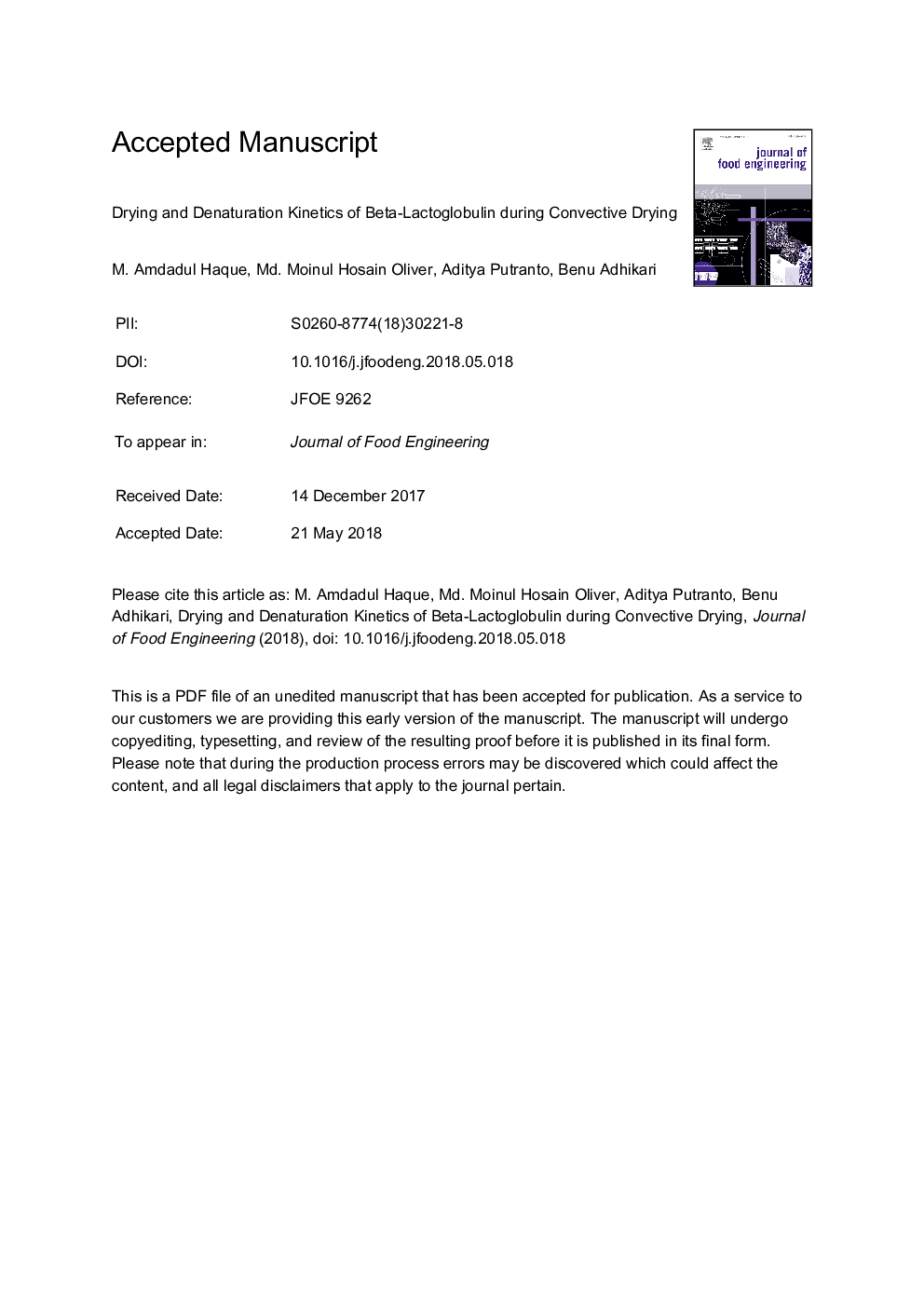| Article ID | Journal | Published Year | Pages | File Type |
|---|---|---|---|---|
| 6664405 | Journal of Food Engineering | 2018 | 35 Pages |
Abstract
Beta-Lactoglobulin (β-Lg) is the major fraction of whey protein that comprises more than 65%. Therefore, denaturation of β-Lg during drying can affect the protein functionality where the whey protein is used as an ingredient in food products. This study was carried out to understand the drying and denaturation kinetics of β-Lg during the drying process. A convective drying environment was used to predict the moisture content and temperature kinetics of the drying droplets of β-Lg using Reaction Engineering Approach (REA) models. The predicted values were then coupled with the first order reaction equation to determine the denaturation kinetics. Single droplets of β-Lg (10% w/v; 1.5â¯Â±â¯0.1â¯mm initial diameter) were dried at two different temperatures (65â¯Â°C and 80â¯Â°C) at a constant air velocity (0.5â¯m/s) for 10â¯min. The real time denaturation of β-Lg protein was quantified at different drying stages using a reversed phase HPLC. These experimental data from single droplet drier, and HPLC were used to validate the model predictions. The REA model predictions fitted well with the experimental data for moisture-time (±5.70% error) and temperature-time (±3.50% error) profiles. Similarly, the first order kinetics model was also able to predict the denaturation kinetics of β-Lg protein with an average error of 6.00%. The conformation study by FTIR observed that the drying stress increased the secondary structural properties random coil and β-sheet which was compensated by uncoiling of α-helix and transformation of β-turn into β-sheet. The morphology study found that initially β-Lg droplet showed flexible nature but formed firm skin with increasing drying time.
Keywords
Related Topics
Physical Sciences and Engineering
Chemical Engineering
Chemical Engineering (General)
Authors
M. Amdadul Haque, Md Moinul Hosain Oliver, Aditya Putranto, Benu Adhikari,
